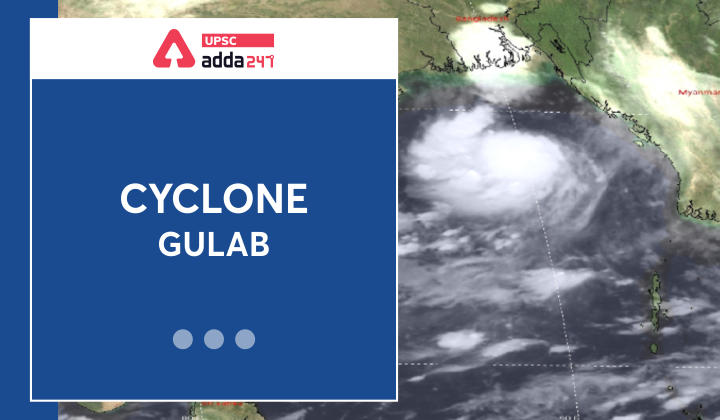Table of Contents
Cyclone Gulab- Relevance for UPSC Exam
- GS Paper 1: Salient features of world’s physical geography– Important Geophysical phenomena such as earthquakes, Tsunami, Volcanic activity, cyclones, etc.
Get free video for UPSC CSE preparation and make your dream of becoming an IAS/IPS/IRS a reality
Cyclone Gulab- Context
- The India Meteorological Department (IMD) said that Cyclone Gulab, which has turned into a deep depression after crossing the coast of Andhra Pradesh, could give birth to a fresh cyclone in the Arabian Sea.
- IMD has issued ‘red’ and ‘orange’ alerts for meteorological subdivisions covering coastal Andhra Pradesh, Telangana, Vidarbha, Marathwada, Madhya Maharashtra, Konkan, Goa, and Gujarat till 30 September.
- Earlier, the India Meteorological Department (IMD) in Odisha and Andhra Pradesh, as the depression in the Bay of Bengal has intensified in cyclone Gulab.
- Odisha evacuated about 40,000 people in six southern districts ahead of the storm.
Cyclone Gulab- Key Points
- About: Cyclonic Storm ‘Gulab’ (pronounced as Gul-Aab) originated over Northwest & adjoining west-central Bay of Bengal.
- Naming of cyclone Gulab: The name ‘Gulab’ was proposed by Pakistan from the list of names approved by the World Meteorological Organization (WMO).
Urban Flooding in India: Overview, Causes and Suggestive Measures
Naming of Cyclones
- Origin: In 2000, WMO agreed to start assigning names for cyclones over the North Indian Ocean basin using a list of names suggested by the countries surrounding the ocean basin.
- Initially, India expressed reservations about naming cyclones.
- After four years of continuous deliberations, the India Meteorological Department (IMD) initiated the naming of the North Indian Ocean storm with ‘Cyclone Onil’ in September 2004.
- Process of Naming Cyclones:
- There are six regional specialised meteorological centres (RSMCs) and five regional Tropical Cyclone Warning Centres (TCWCs) across the globe.
- IMD’s RSMC in New Delhi is one among them that provides advisories to 13 countries in the north Indian Ocean basin: Bangladesh, India, Iran, Maldives, Myanmar, Oman, Pakistan, Qatar, Saudi Arabia, Sri Lanka, Thailand, United Arab Emirates and Yemen.
- RSMC, New Delhi is, therefore, responsible for naming cyclones over the Bay of Bengal and the Arabian Sea based on the suggested names from all these countries.
What if Cyclone Gulab gives birth to a fresh cyclone in the Arabian Sea?
- Change of Name: the present system will be given a new name if the wind speed touches 68km/hr.
- It will only be the third such instance since 1996 when a cyclone after making landfall would further strengthen and re-emerge as a fresh system of ‘cyclone’ category in the North Indian Ocean region.
- For Instance, very severe cyclone Gaja- formed in the Bay of Bengal- had crossed the Tamil Nadu coast and later re-emerged in the Arabian Sea from central Kerala.
- Gaja brewed in the Bay of Bengal for nearly 10 days before making landfall and had one of the longest cyclone tracks covering 3,418 km.




 TSPSC Group 1 Question Paper 2024, Downl...
TSPSC Group 1 Question Paper 2024, Downl...
 TSPSC Group 1 Answer key 2024 Out, Downl...
TSPSC Group 1 Answer key 2024 Out, Downl...
 UPSC Prelims 2024 Question Paper, Downlo...
UPSC Prelims 2024 Question Paper, Downlo...




